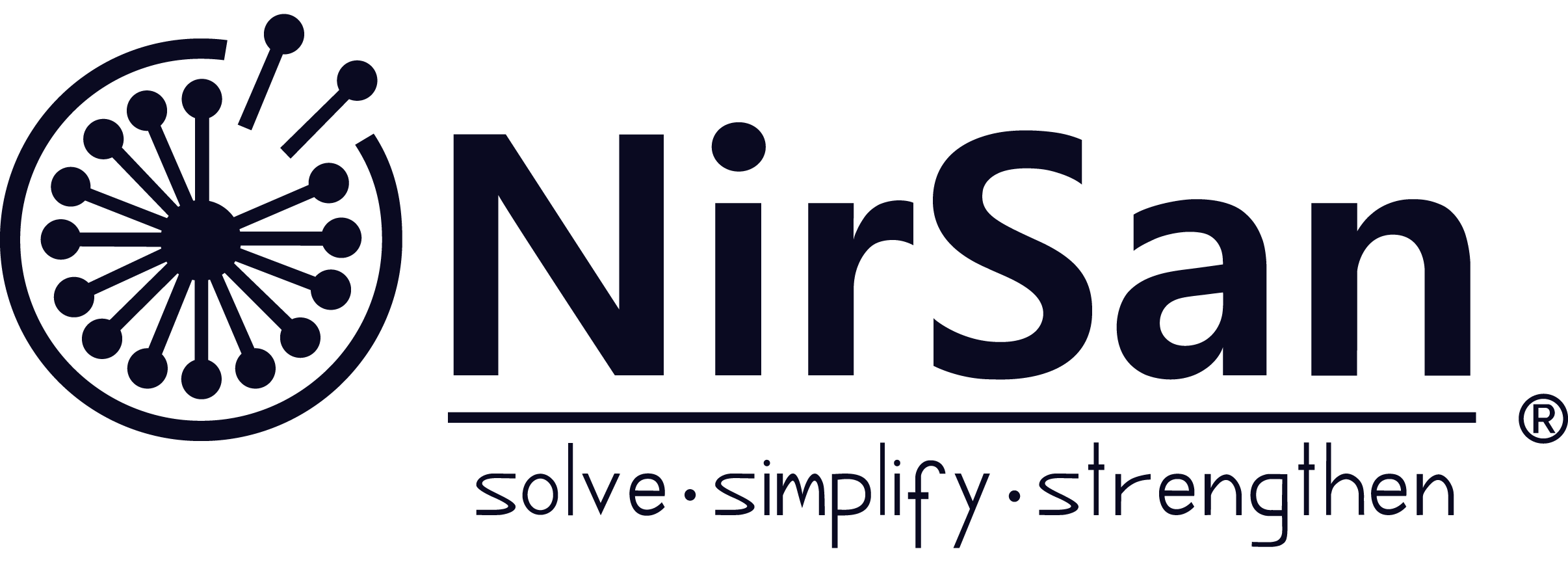
What is P-CORE®?

P-CORE® empowers the hospital to be patient-centric in real, and not let patient-centricity languish in its mission statements and slogans. P-CORE® provides the leadership with a thorough assessment of patient centricity of the hospital, including an assessment of people, processes and infrastructure. P-CORE® is underpinned by the medical philosophy: “no decision about me, without me”. P-CORE® places the patient firmly at the centre of all care domains within a hospital. P-CORE® is based on our proprietary framework that views patient-centricity along six perspectives: patient as the ‘unique subject of care’; patient as the ‘interested party’; patient as the ‘organisation mission and raison d’etre’; patient as the ‘object of care’; patient as the ‘process designer’; and patient as the ‘policy influencer’.
P-CORE® enables the hospital to be patient-centric in real, and to not let patient-centricity languish in mission statements and slogans. It provides a thorough assessment of the hospital’s patient centricity, including an assessment of its people, processes and infrastructure. P-CORE® is underpinned by the medical philosophy: “no decision about me, without me”. P-CORE® is based on our proprietary framework that views the patient in six roles: the ‘unique subject of care’, the ‘interested party’, the ‘organisation raison d’etre’, the ‘object of care’, the ‘process designer’, and the ‘policy influencer’.
P-CORE® enables the hospital to be patient-centric in real, and to not let patient-centricity languish in mission statements and slogans. It provides a thorough assessment of the hospital’s patient centricity, including an assessment of its people, processes and infrastructure. P-CORE® is underpinned by the medical philosophy: “no decision about me, without me”. P-CORE® is based on our proprietary framework that views the patient in six roles: the ‘unique subject of care’, the ‘interested party’, the ‘organisation raison d’etre’, the ‘object of care’, the ‘process designer’, and the ‘policy influencer’.
P-CORE® enables the hospital to be patient-centric in real, and to not let patient-centricity languish in mission statements and slogans. It provides a thorough assessment of the hospital’s patient centricity, including an assessment of its people, processes and infrastructure. P-CORE® is underpinned by the medical philosophy: “no decision about me, without me”. P-CORE® is based on our proprietary framework that views the patient in six roles: the ‘unique subject of care’, the ‘interested party’, the ‘organisation raison d’etre’, the ‘object of care’, the ‘process designer’, and the ‘policy influencer’.
Why worry about "patient-centricity"? Why get P-CORE®?
Patient centricity has been a priority for leading health systems for over a decade. Despite mixed comprehension and application, its benefits have been remarkable. Foremost, P-CORE® benefits clinical care. Research and experience have established the impact of patient centricity on operating metrics (such as ‘average length of stay’, patient volume, cost per case, patient satisfaction scores), clinical outcomes (such as mortality, infection rates, ICU return visits, errors in medication) and chronic care management (such as disease management, quality of life). In addition, P-CORE® provides organisational benefits. Patient centricity raises employee satisfaction and organisation climate. Finally, patient centricity is often a mandatory condition for full repayment by governments and payors.
Patient centricity has been a priority for leading health systems for over a decade. Despite mixed comprehension and application, its benefits have been remarkable. Research and experience have established its impact on operating metrics (such as ‘average length of stay’, cost per case), clinical outcomes (such as infection rates, ICU return visits) and chronic care (such as disease management, quality of life). P-CORE® benefits the organisation since patient centricity lifts the organisation climate. Besides, patient centricity is increasingly being set as a mandatory condition for full repayment.
Patient centricity has been a priority for leading health systems for over a decade. Despite mixed comprehension and application, its benefits have been remarkable. Research and experience have established its impact on operating metrics (such as ‘average length of stay’, cost per case), clinical outcomes (such as infection rates, ICU return visits) and chronic care (such as disease management, quality of life). P-CORE® benefits the organisation since patient centricity lifts the organisation climate. Besides, patient centricity is increasingly being set as a mandatory condition for full repayment.
Patient centricity has been a priority for leading health systems for over a decade. Despite mixed comprehension and application, its benefits have been remarkable. Research and experience have established its impact on operating metrics (such as ‘average length of stay’, cost per case), clinical outcomes (such as infection rates, ICU return visits) and chronic care (such as disease management, quality of life). P-CORE® benefits the organisation since patient centricity lifts the organisation climate. Besides, patient centricity is increasingly being set as a mandatory condition for full repayment.

Who will benefit from P-CORE®?

P-CORE® benefits a wide range of stakeholders. First, P-CORE® benefits patients and their families and caregivers by instilling in care a high level of dignity and respect, and empowerment and involvement. Second, P-CORE® benefits clinical staff and caregivers through a heightened sense of professional achievement, satisfaction, integrity and connectedness. Third, the institution and hospital organisation benefits from a rise in employee satisfaction, motivation and retention. Fourth, P-CORE® enables hospital leadership to prioritise initiatives through the lens of patient centricity, thereby even opening up cost optimisation avenues. Fifth, P-CORE® allows payors to channel their payments towards patient-centred expenditure, and helps governments enhance societal value creation in public health.
First, P-CORE® benefits patients and their families by instilling in care a high level of dignity, empowerment and involvement. Second, P-CORE® benefits clinical staff through a heightened sense of professional achievement, integrity and connectedness. Third, the hospital organisation benefits from a rise in employee satisfaction and retention. Fourth, P-CORE® helps hospital leadership prioritise initiatives and optimise costs. Fifth, P-CORE® allows payors to channel payments towards patient-centred expenditure, and helps governments enhance societal value creation in public health.
First, P-CORE® benefits patients and their families by instilling in care a high level of dignity, empowerment and involvement. Second, P-CORE® benefits clinical staff through a heightened sense of professional achievement, integrity and connectedness. Third, the hospital organisation benefits from a rise in employee satisfaction and retention. Fourth, P-CORE® helps hospital leadership prioritise initiatives and optimise costs. Fifth, P-CORE® allows payors to channel payments towards patient-centred expenditure, and helps governments enhance societal value creation in public health.
First, P-CORE® benefits patients and their families by instilling in care a high level of dignity, empowerment and involvement. Second, P-CORE® benefits clinical staff through a heightened sense of professional achievement, integrity and connectedness. Third, the hospital organisation benefits from a rise in employee satisfaction and retention. Fourth, P-CORE® helps hospital leadership prioritise initiatives and optimise costs. Fifth, P-CORE® allows payors to channel payments towards patient-centred expenditure, and helps governments enhance societal value creation in public health.
Where (in which settings) should you get P-CORE®?
Get P-CORE® for your organisation if you notice any of the following four indicators. First is the ‘dormancy indicator’ – patient centricity has not been able to move out of the mission statement and step in to real life. Second is the ‘patient indicator’. Patient satisfaction scores and subjective data indicate a decline and poor level of patient satisfaction. Third is the ‘implementation indicator’. You and your colleagues in the leadership team have attempted to bring about a culture of patient centricity, with limited or mixed success. Fourth is the ‘congruence indicator’. Staff employees in clinical care have indicated a lack of congruence between their job experience and their personal calling of “service to the ones who are suffering”. These indicators point towards an underlying lack of patient centricity, and a need for P-CORE®.
Get P-CORE® if you notice any of four indicators. First, ‘dormancy indicator’: patient centricity is not able to move out of the mission statement and step in to real life. Second, ‘patient indicator’: patient satisfaction scores and subjective data indicate a decline and poor level of patient satisfaction. Third, ‘implementation indicator’: the hospital has attempted to bring about a culture of patient centricity, with limited or mixed success. Fourth, ‘congruence indicator’: clinical care staff have indicated a gap between job experience and their personal calling of “service to the ones who are suffering”.
Get P-CORE® if you notice any of four indicators. First, ‘dormancy indicator’: patient centricity is not able to move out of the mission statement and step in to real life. Second, ‘patient indicator’: patient satisfaction scores and subjective data indicate a decline and poor level of patient satisfaction. Third, ‘implementation indicator’: the hospital has attempted to bring about a culture of patient centricity, with limited or mixed success. Fourth, ‘congruence indicator’: clinical care staff have indicated a gap between job experience and their personal calling of “service to the ones who are suffering”.
Get P-CORE® if you notice any of four indicators. First, ‘dormancy indicator’: patient centricity is not able to move out of the mission statement and step in to real life. Second, ‘patient indicator’: patient satisfaction scores and subjective data indicate a decline and poor level of patient satisfaction. Third, ‘implementation indicator’: the hospital has attempted to bring about a culture of patient centricity, with limited or mixed success. Fourth, ‘congruence indicator’: clinical care staff have indicated a gap between job experience and their personal calling of “service to the ones who are suffering”.

How does P-CORE® work?

P-CORE® is typically used by hospitals annually, though major change efforts may warrant more frequent usage. The four stages of ‘installation’, ‘engagement’, ‘analysis’ and ‘dissemination’ take place over ten weeks. Installation requires the hospital leadership to decide the scope of the product, including choosing from the six perspectives of patient centricity and nominating the groups of responders. Input providers typically include a cross-section of patients, nursing staff, other clinical care providers, and staff from relevant support and administrative departments. P-CORE® then engages these individuals in a process of reflection, while seeking their inputs and feedback. Subsequently, the objective analytical output, embellished by subjective perspectives, is made available to the hospital leadership.
P-CORE® is used by hospitals annually, though change efforts may warrant a more frequent usage. ‘Installation’, ‘engagement’, ‘analysis’ and ‘dissemination’ take place over ten weeks. To install, the hospital leadership needs to decide scope by choosing from the six perspectives of patient centricity, and nominate responders, including patients and staff from the nursing, clinical and administrative departments. P-CORE® then engages these individuals to obtain their inputs. The objective analytical output, strengthened by subjective perspectives, is then made available to the hospital leadership.
P-CORE® is used by hospitals annually, though change efforts may warrant a more frequent usage. ‘Installation’, ‘engagement’, ‘analysis’ and ‘dissemination’ take place over ten weeks. To install, the hospital leadership needs to decide scope by choosing from the six perspectives of patient centricity, and nominate responders, including patients and staff from the nursing, clinical and administrative departments. P-CORE® then engages these individuals to obtain their inputs. The objective analytical output, strengthened by subjective perspectives, is then made available to the hospital leadership.
P-CORE® is used by hospitals annually, though change efforts may warrant a more frequent usage. ‘Installation’, ‘engagement’, ‘analysis’ and ‘dissemination’ take place over ten weeks. To install, the hospital leadership needs to decide scope by choosing from the six perspectives of patient centricity, and nominate responders, including patients and staff from the nursing, clinical and administrative departments. P-CORE® then engages these individuals to obtain their inputs. The objective analytical output, strengthened by subjective perspectives, is then made available to the hospital leadership.
When during the financial year should you get P-CORE®?
From the time you are ready to install the product, P-CORE® requires ten weeks to go through the ‘installing’, ‘engaging’, ‘analysing’ and ‘disseminating’ phases. The underlying focus and design philosophy of P-CORE® implies that there is no optimal period for its usage. In other words, P-CORE® does not follow or juxtapose with the requirements of the annual financial or operating calendar of a hospital. Instead, P-CORE® should be activated based upon the stimulus of the four indicators outlined above (viz., ‘dormancy’, ‘patient’, ‘implementation’ and ‘congruence’ indicators). P-CORE® design is remarkable for its independence and flexibility. The product’s usage is independent of existing hospital processes. Get P-CORE® anytime during the financial year, and use it as frequently as once a quarter.
The underlying design philosophy of P-CORE® implies that there is no optimal period for its usage. P-CORE® does not follow or juxtapose with the requirements of the hospital’s annual financial or operating calendar. Instead, activate P-CORE® based upon the stimulus of the four indicators outlined above (viz., ‘dormancy’, ‘patient’, ‘implementation’ and ‘congruence’ indicators). P-CORE® design is remarkable for its independence and flexibility. The product’s usage is independent of existing processes. Get P-CORE® anytime during the financial year, and use it as frequently as once a quarter.
The underlying design philosophy of P-CORE® implies that there is no optimal period for its usage. P-CORE® does not follow or juxtapose with the requirements of the hospital’s annual financial or operating calendar. Instead, activate P-CORE® based upon the stimulus of the four indicators outlined above (viz., ‘dormancy’, ‘patient’, ‘implementation’ and ‘congruence’ indicators). P-CORE® design is remarkable for its independence and flexibility. The product’s usage is independent of existing processes. Get P-CORE® anytime during the financial year, and use it as frequently as once a quarter.
The underlying design philosophy of P-CORE® implies that there is no optimal period for its usage. P-CORE® does not follow or juxtapose with the requirements of the hospital’s annual financial or operating calendar. Instead, activate P-CORE® based upon the stimulus of the four indicators outlined above (viz., ‘dormancy’, ‘patient’, ‘implementation’ and ‘congruence’ indicators). P-CORE® design is remarkable for its independence and flexibility. The product’s usage is independent of existing processes. Get P-CORE® anytime during the financial year, and use it as frequently as once a quarter.

© Copyright 2019  All rights reserved.
All rights reserved.
© Copyright 2019  All rights reserved.
All rights reserved.
© Copyright 2019  All rights reserved.
All rights reserved.
© Copyright 2019  All rights reserved.
All rights reserved.
